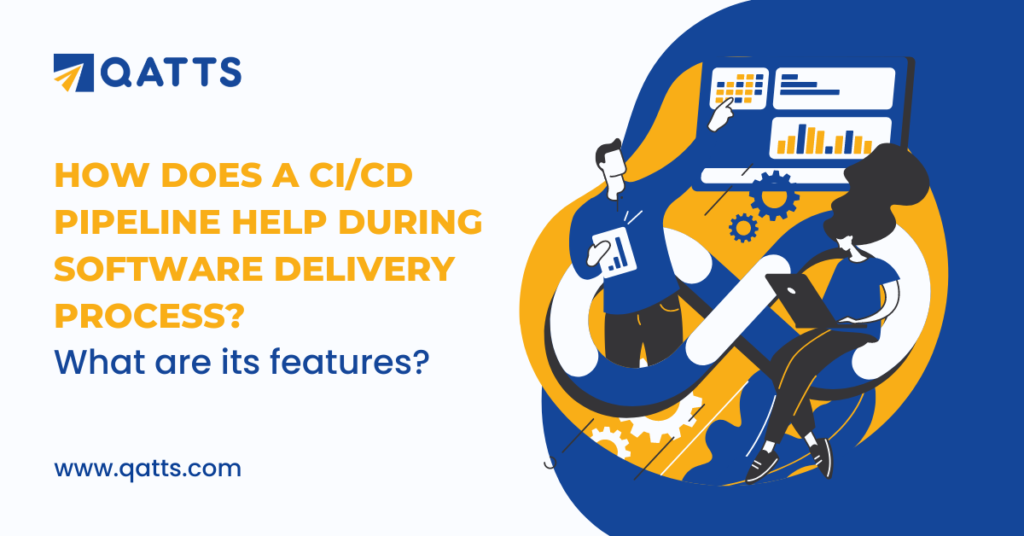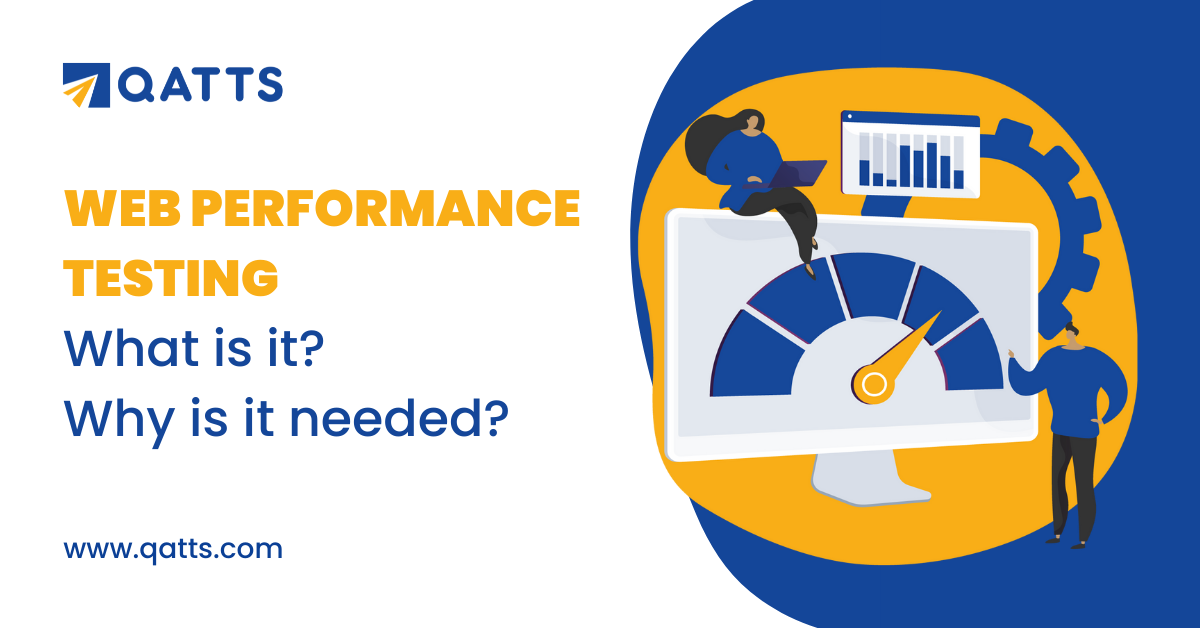
Every so often we notice that there is a software update on our phones or laptops or any other electronic devices that we keep using. Surely, we have all wondered what this means, and how it comes about, and one point or another in our lives. Software updates fix any bugs or issues in the existing software, and this process is the continuous integration and continuous deployment (CI/CD) pipeline, which is a series of steps that must be performed in order to deliver a new version of software. In this blog, we will explore in detail what CI/CD is, exactly, and what its purpose is?
What is CI/CD?
CI/CD is an automated software delivery process that reduces human error and maintains consistency of the process. CI stands for continuous integration, while CD stands for continuous delivery. The CI/CD system combines the work of different people working on software, by streamlining the application coding, testing and deployment. It also lets everyone easily access any required data from a single repository used for storing work, by everyone.
What Is CI/CD Pipeline?
The CI/CD pipeline is the process of software delivery, which is integrated with automation testing tools and improved workflow. The methodology behind the CI/CD pipeline is iterative rather than linear, meaning that it allows the developers to write code, run it, check for errors, make the necessary changes and deliver the outputs as per their requirements, in real time.
Every change in the code is tracked by the CI, providing feedback to the others working on the project at the same time, about the changes done, and by whom, immediately.
CD processes are fully automated, and include infrastructure provisioning and deployment, which may consist of multiple stages.
The CI CD pipeline process essentially consists a path of building, testing, and deploying code. The main objective of this is to minimize human errors, and to make sure that there’s consistency in the process of developing the software.
Benefits Of CI/CD Pipeline
The basic advantage of a CI CD pipeline process is that it is automated, which means that there could be as few coding errors as possible. Apart from that, the following include the benefits of a CI/CD pipeline:
- Reduced Automation Time
The time of the software delivery process is greatly reduced by automation testing, as it takes just a few minutes for the changes done on the software to be available to everyone, through cloud technology. - Constant Feedback
As CI CD uses the mantra of build, test and deploy continuously, the code is tested within minutes, and developers are immediately made aware of the results, enabling them to take quick action. - Improves Code Quality
As the process works in real time, with all the changes being done to the software being made available to everyone working immediately, errors can be avoided easily. Moreover, since the CI/CD pipeline allows developers to integrate their codes frequently, it results in improved code quality. - Reduces Cost
A lot of money is usually spent on software development and testing, which is usually a tedious process, if not done right. However, with automation technology, software development can be achieved at a much faster rate, thus reducing the cost as well. - Easier Error Detection
Each and every version of code written is immediately tested, as this is an automated integration process. Thus, it is easier to detect errors, and make changes immediately. - Improved Collaboration
As the code is available to the entire team working on the software, and since everyone is aware of the changes being done in real time, collaboration is made easier. - Attracts Talent
As silly as it might sound, more people would be interested in working on software development, if the entire process is automated, making it less difficult to find the appropriate talent for the job.
Elements Of A CI/CD Pipeline
Also known as the various components or phases of a CI/CD pipeline, these are what make up the process that the CI CD pipeline carries out, during software testing. The various phases include:

- Build Phase
This part of the continuous integration process, triggered when new codes are pushed into the repository. This combines all the parts of the various codes stored into the repository and compiles them into a new build, while also determining any issues or conflicts. - Testing Phase
This phase includes a number of tests, where essentially the code is tested. These tests could include integration tests, unit tests, and regression tests. - Deliver Phase
Once a codebase is approved, it is sent to a production environment, where developers simulate the product in real time, checking any issues persistent with the product, and also evaluate the overall performance. - Automated Testing Phase
The final tests to determine whether or not the product is good enough for the final stage, are done here. Automated and continuous testing is done to make sure that there are no remaining bugs in the code, and that the product is ready to deploy. - Deploy Phase
Once everything is checked and made sure of, the final product is moved into production. The products or code are sent to repositories and then to production by human approval, in case of continuous delivery. In case of continuous deployment, this step is automated.
Automation And How The CI/CD Pipeline Works
If as discussed earlier, the Continuous Integration process is completely different from the Continuous delivery process. Both are put together from the CD CI pipeline, which is a network of delivering software, at the best possible quality.
Here’s how these two put together form a comprehensive automated testing network:
CI brings together all the changes done to the code at one point, making life much easier for the developers working on the project. Every bit of code that’s been changed or written newly is updated in real time, which can be accessed by everyone working on the project. This automated process wastes as less time in testing as possible, and helps developers fix bugs very quickly.
The Continuous Delivery stage is all about putting the written code into a production testing environment, where it becomes clear whether or not the product works well. Developers are sent notifications regarding the performance of the product as well, and errors are identified and fixed in this automated process as well. In the final stage, if the product is found to be working as per requirements, it is then deployed.
CD also stands for Continuous Deployment. It automatically releases code changes to everyone involved in the project and conducts a series of predefined tests, such as integration tests, which ensure code integrity. If you are looking for a tool that combines both automation and CI-CD then QATTS would be the option to go with.
What Is The Difference Between Continuous Delivery And Continuous Deployment?
The key difference between Continuous Delivery and Continuous Deployment lies in the level of automation used in the software or app releases.
In continuous delivery, human intervention is required to move the product into production, following successful tests, all of which are automated processes.
Human intervention is of the least necessity in continuous deployment, where the entire process is automated. The code is deployed into the production stage automatically, once all the required tests are done.
Whether a company chooses Continuous Delivery or Continuous Deployment is based on their requirements. Someone who needs regular updates to be made on their product should opt for Continuous Deployment as everything is updated in real time, and there is no need for any human intervention. In case you do not need to update your progress in real time, and have time to deliver your product, then you can always opt for continuous delivery.
How Does Continuous Integration Improve Collaboration And Code Quality?
Continuous Integration, as mentioned earlier, updates all the changes done to a piece of code, or any new code, available in real time, to everyone working on the product.
This essentially means that identifying any error in the code written, is made much easier for everyone involved. As such, it is always easier to change or fix shorter codes than longer ones.
Most teams have a standard of committing code at least daily, and with developers working on different parts of the same code at the same time, it is easier to identify defects and other issues in smaller codes, than in larger ones developed over an extensive period.
Development teams that use continuous integration have different techniques to control what features and code are ready for production.
CI/CD Tools And Plugins
A number of factors are to be considered when choosing the right tool for CI/CD. The focus, normally, should be on how optimize and automate the software development process. Open-source tools are the effective way for integration, testing and deployment, in the CI/CD pipeline.
Jenkins is the most commonly used open-source CI/CD tool. It is an automated CI server, written in Java, and used for automating CI/CD steps. Other open-source tools include Travis CI and Circle CI.
Other types of tools include:
- Integrated development environments (IDE), like GitHub or AWS Code Commit. These help developers create, maintain, and track software packages. On the other hand, GitLab seeks to provide IDE within a comprehensive platform that includes other tools.
- Docker is used for packaging and shipping applications, while Kubernetes is used for orchestration, when operating in a cloud environment.
What Makes A Good CI/CD Pipeline?
The overall need or necessity of a CI/CD pipeline is that it makes the software designing a faster, and easier process. As such, there are some parameters that determine whether or not a certain CI/CD pipeline is good enough or not. Here are some factors that make a good CI/CD pipeline:
- Speed
It is important for any code change or other changes done to the product to be updated within 10 minutes, which is done by Continuous Integration. If the time exceeds 10 minutes, then the entire purpose of automation, and thereby, CI, is lost. In the current day, where demand is at its highest peak, it is always important for the delivery to be just as fast. - Accuracy
The more accurate the CI/CD pipeline is, the closer it is, to being fully automated. A good CI/CD pipeline should accurately run and analyse all the tests being done, without which automation is rendered insufficient. - Reliability
Regardless of how many teams are working on a project at a time, and whether these teams increase or decrease during the duration of the project, the CI/CD pipeline should always be reliable, in the sense that its outputs are always stabilised. - Comprehension
A good CI/CD pipeline should cover all the aspects of a seamless software delivery process. Even one uncovered phase could severely affect the entire pipeline. Only when the pipeline covers every aspect do we get the perfect output.
Next Generation CI/CD Applications
Software delivery process is not the only area where CI/CD is used. Advanced CI/CD models can be employed in a wide variety of fields, which include:
- MLOps
This is employed for machine learning models, and supports infrastructure, integration and deployment to training and production. - Synthetic Data Generation
Through synthetic data generation techniques, data sets used by test automation engineers are employed to test APIs, and by data scientists to train models. - Aiops Platforms
Aggregates observability data and correlates alerts from multiple sources into incidents. - Reusable pipelines are created by teams working on microservices, to support and scale development and review options on Azure and AWS.
- Engineers use CI/CD in other areas, including network configuration, embedded systems, database changes, IoT, and AR/VR.
Conclusion
On the whole, CI/CD, and a CI/CD pipeline helps in speeding up the process of software delivery, by automating the entire process. This also makes the life of those working on a project easier, as changes made to existing code, or new code written, are updated in real time, making it less of a hassle for those involved, to identify any changes done.
CI/CD can be employed by anyone with the right understanding of what it has to offer, and can employ it to their products, if they find its contributions apt for them.


